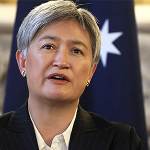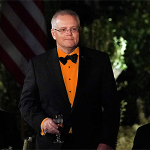The British army is overstretched. This is not breaking news to anyone who takes an interest in defence. Although its budget has grown in real terms over the last decade, it has faced a complex network of problems. In only six of the last 25 years has recruitment exceeded outflow, meaning that the army has been consistently under strength. Meanwhile, two of its three armoured vehicles, Ajax and Boxer, are badly behind schedule. Consequently, the new ‘Future Soldier’ reforms have been disrupted, and the gifting of equipment and ammunition to Ukraine has severely depleted stockpiles.
The flair for improvisation shown by good soldiers has done much to conceal the worst of these weaknesses, but something had to give. This week it was reported in the Times that the army has reduced the number of personnel deployed to Operation Cabrit, the UK’s contribution to Nato’s Forward Land Forces. The alliance has eight multinational battlegroups based in eastern Europe; in Estonia, Britain is the so-called ‘framework nation’ for the battlegroup.
The gap between what we have promised and what we can deliver is letting our allies down
Two years ago, the British component of the battlegroup was around 1,600 personnel. At that year’s Nato summit in Madrid, then-defence secretary Ben Wallace pledged an additional 1,000 troops, so that the UK would have a force the size of a small brigade with a one-star headquarters. In fact, the opposite has happened.
The army has drawn down its forces in Estonia to 900, the same level as before Russia’s invasion of Ukraine, and reduced the proportion of armour and artillery. One report suggests the force has only ten Challenger 2 main battle tanks. The infantry of 1st Battalion, the Mercian regiment, has recently taken over from the Royal Dragoon Guards, an armoured reconnaissance regiment, as the nucleus of UK forces.
This has been noticed. General Riho Terras, former commander of the Estonian Defence Forces and now an MEP, told Times Radio that the lack of resources provided by the United Kingdom and other Nato members made him anxious that they were not taking the threat to the alliance’s eastern flank sufficiently seriously. Britain was falling short of its commitment to provide a brigade to defend Estonia, he said.
‘The UK has difficulties to put together one brigade to participate in operations. I see it in Estonia every day,’ he reflected. Terras also doubted that the British army would be able to field the brigade it had promised for Exercise Hedgehog 25, running from 5 to 23 May, a primarily defensive exercise ‘designed to enhance the operational readiness and effectiveness of the Estonian, Denmark, France and its allied units’. The former general had no doubt what lay at the root of these failures: the British ‘have problems with the financing’.
It is worse than simply a shortfall of money. Rather, to borrow a term from Malcolm Tucker, it is an omnishambles of inadequate financial resources, sustained under-recruitment, delays in procurement and modernisation of equipment, and excessively ambitious deployments elsewhere. All of this is made more acute by the government’s shadow-boxing, context-free commitment to a peacekeeping force in a not-noticeably-peaceful Ukraine. As I explained recently, the army has almost no spare capacity.
This week, Estonia’s minister of defence, Hanno Pevkur, visited John Healey, the defence secretary, in London. Healey is a relatively straightforward politician, practical and unshowy. But after nearly nine months at the Ministry of Defence he is beginning to succumb to ‘Main Building-speak’: bland, generalised, often repetitive platitudes, a bold-faced ability to ignore specific issues raised, and a willingness to assume the best that makes Professor Pangloss seem Eeyorish by comparison.
Healey rolled out the Starmeresque assurance of Britain’s ‘ironclad commitment’ to Estonia, and told the media that UK forces there were ‘highly valued’ by their hosts. ‘They work together, we train together, we deploy together and we plan together’, they are alongside Estonian forces ‘on the front line’ and are ‘reinforcing that eastern flank on the Russian border that is a really important part of Nato’s defence posture’.
All of those things may be true but they do not address the underlying problems. Is the UK’s reduced footprint in Estonia a permanent change? Are we relying on allies to fill any capability gaps? Will their strength be reduced any further? What effect will any contribution to a peacekeeping force in Ukraine have on Operation Cabrit? Is the security situation better, worse or the same as it was in April 2022? Or is this all being driven by sheer grinding financial necessity?
We can only guess at the answers, though it seems unlikely any will be encouraging. In the meantime, yet again, the gap between what we have promised and what we can deliver is letting our allies down. The additional spending due in 2027 cannot come soon enough, but more and more it looks, as many of us have long suggested, like it will not be enough.








